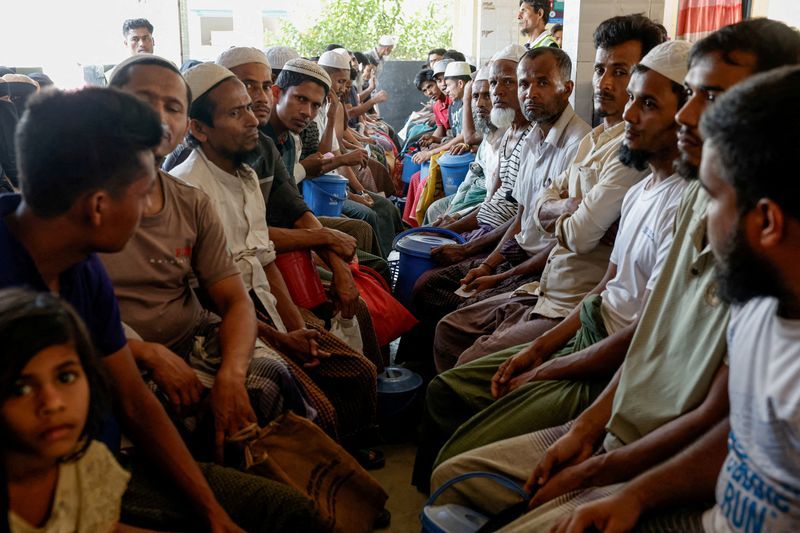
After several years of fruitless attempts to declare bankruptcy, Crystal Chen’s final days were marred by a major regret – that her family might receive harassing phone calls from creditors after her death.
Before succumbing to an illness last month at the age of 38, Chen filed for bankruptcy protection in two courts in the southern Chinese city of Guangzhou, where she lived. The hope was that she would be able to wipe out 1.9 million yuan (US$260,000) worth of debt that she accumulated due to a failed investment.
Both courts rejected her request on the grounds that the country lacks a “personal bankruptcy statute”, said her lawyer, Alice Luo.
Do you have questions about the biggest topics and trends from around the world? Get the answers with SCMP Knowledge, our new platform of curated content with explainers, FAQs, analyses and infographics brought to you by our award-winning team.
While China has turned from a centrally planned system into a market economy through decades of reform – including a law on enterprise bankruptcy enforced in 2007 to help troubled companies recover from crippling debt – there is no such legislation for individuals such as Chen who are unable to pay off their debts.
Shenzhen, the metropolis located a 130km (81-mile) drive from Guangzhou, is the only place in all of mainland China where local residents can file for personal bankruptcy, as a pilot scheme was launched there in March 2021.
As China’s household debt creeps upward, IMF’s warning line looms
Contending that a bankruptcy law that doesn’t cover individuals is a “half-baked law”, legal professionals have been calling for Shenzhen’s scheme to be extended to the entire nation, giving people the chance to emerge from debilitating debt with a fresh start.
This is particularly important for the millions of so-called microbusinesses run by individuals or small families that are struggling in the current economic downturn, and for the fostering of entrepreneurship and creativity that Beijing has been seeking, they said.
But perceived obstacles, including a lack of public understanding, government support and professional services, suggest that progress may be slow.
In Chen’s case, perhaps it would have given her the chance to live more fulfilling final years, as she first submitted her bankruptcy application in 2019. Her lawyer said Chen was a senior foreign-trade saleswoman earning about 10,000 yuan (US$1,370) a month.
“She originally intended to willingly go bankrupt and pay back the money slowly, if the high interest rate could be stopped or exempted,” Luo said.
If successful, Chen would have had her remaining debt forgiven after a liquidation of her assets, with a cash-repayment amount based on her income for a fixed period of time – three years under the Shenzhen scheme.
And her 33 creditors, including banks, microfinance firms and online loan companies, would have had a chance to get some repayment while being prevented from taking legal action against her.
But now, with her death, what she leaves behind will be used to repay the debt, and her family could be persecuted for the unpaid sum, as a traditional belief that “the son must pay his father’s debt” still prevails in Chinese society, Luo said.
Li Shuguang, a professor from the China University of Politics and Law who engaged in the drafting and amendment of the Enterprise Bankruptcy Law, said that while giving “honest but unfortunate” debtors a second chance and offering a “stable expectation” for creditors, a personal bankruptcy law is also a fundamental component of common prosperity – a repeated goal of President Xi Jinping that aims to put more money in the hands of low-income groups while reducing regional pay disparities.
Freeing such debtors from some of their debt burden could help resolve many social conflicts stemming from outstanding payments, while making people less likely to turn to crime in desperate times, he noted.
“When people can’t get help from social insurance in time, or they are already in heavy debt before an accident happens, a personal bankruptcy system is needed to supplement to the social security network,” he said, adding that personal bankruptcy is an important component of most market economies.
In the United States last year, annual bankruptcy filings totalled 387,721, and 374,240 were non-business filings, mostly by individuals, according to figures released by the Administrative Office of the US Courts.
Zhong Jian, a senior partner with the Beijing-based Zhong Yin Law Firm, and a specialist on non-performing assets and debt recovery, said that for China, “in the current economic downturn or even a recessionary cycle, the problem of individual and household indebtedness is bound to become more prevalent, and the promotion of this system becomes even more necessary for the economy as a whole”.
China had 52 million micro, small and medium-sized enterprises (SMEs) by the end of last year, according to government data, and many are solely funded by individual families, using personal assets and loans.
“Behind every business is an entrepreneur,” Professor Wang Xinxin, an economic law and bankruptcy expert at Renmin University, told the official China Newsweek last month.
In many cases, “once a business is in financial trouble, the owner will be so, too”, Wang said. “Without a personal bankruptcy scheme to rescue the entrepreneur, the bankruptcy proceeding of the company will not go smoothly.”
These 3 Chinese regions have the most daunting debt piles slamming GDP
Raymond Zheng, who owns a piling company in Guangzhou that has amassed considerable debt amid the country’s ongoing property crisis, is among those who are being dragged down by their businesses.
“What I want most now is for my company to go bankrupt, and I even hired a bankruptcy law firm for this purpose, but the court refused to accept my application,” he said, adding that failing to declare bankruptcy “makes my debts keep snowballing”.
Feeling like he was falling into a “bottomless abyss”, Zheng’s personal credit rating also took a big hit as he defaulted on payments to third parties. Now he is restricted from borrowing money, using a credit card or even buying a plane ticket, under China’s credit system.
Many local authorities appear unwilling to see an increase in local bankruptcy applications, regardless of individuals or companies, said Luo, the Guangzhou-based lawyer.
“It represents a deterioration of the business environment for their authorities,” she said.
In addition, from the perspective of safeguarding the interests of creditors, especially government-backed banks, local courts lack motivation to promote personal bankruptcy, Luo added.
The Shenzhen Intermediate People’s Court received more than 1,600 applications for personal bankruptcy between March 2021 and early June this year, and more than 70 per cent of them were declined because the applicants failed to qualify or provide all of the required documents, China Newsweek reported last month.
Its regulations prescribe that applicants must have lived in the city and paid social security contributions there for at least three years, to prevent residents of other areas from flocking to Shenzhen to take advantage of the pilot scheme.
China’s traditional attitude that emphasises good faith, as represented in another old saying – “a murderer must pay with his life as a debtor pays with money”, is another setback.
“The rule of law is especially important amid such a culture. We need to build normal social expectations and give financially distressed people hope to carry on,” Professor Li said.
There are a series of technical issues that may hinder the enforcement of personal bankruptcy in the existing environment, he said, including an immature personal credit system, a large volume of transactions in cash that are untraceable, and the difficulty in differentiating separate property from community property when it comes to couples.
As China’s debt risks mount, the spectre of looming local crises rears its head
In the US, federal law requires individuals to report cash payments in excess of US$10,000 to the government, whereas there are no such rules in China, he noted.
Zhong, the lawyer, also pointed to a lack of market-oriented professional services catering to bankruptcy proceedings.
“In most personal bankruptcy cases, the amount involved is generally small – meaning the attorney fee would be low, but they are in fact complex to handle,” he said.
Speaking for the late Chen’s husband, her lawyer said he was still considering whether to inherit her property, as doing so would require taking over her debt.
“In fact, she left almost nothing,” Luo said. “If he doesn’t choose to inherit, then he won’t be responsible for the debt.”
But even though her family would be legally absolved from the debt, “there’s no way to avoid possible harassment” from individual creditors or microfinance firms, she added.
More from South China Morning Post:
- China’s new bureau for private firms aims to ‘unleash their vigour’ and shore up national growth
- China’s 31-point plan vows private firms, like state brethren, will be ‘bigger, better and stronger’
- Chinese financial regulators pledge further measures to tackle local government debt and property sector woes
- China debt: Beijing warned opportunity costs are rising as it seeks comprehensive solution to local government crisis
- Chinese homeowners in a rush to clear mortgages early as consumers turn pessimistic over economic outlook
For the latest news from the South China Morning Post download our mobile app. Copyright 2023.









































